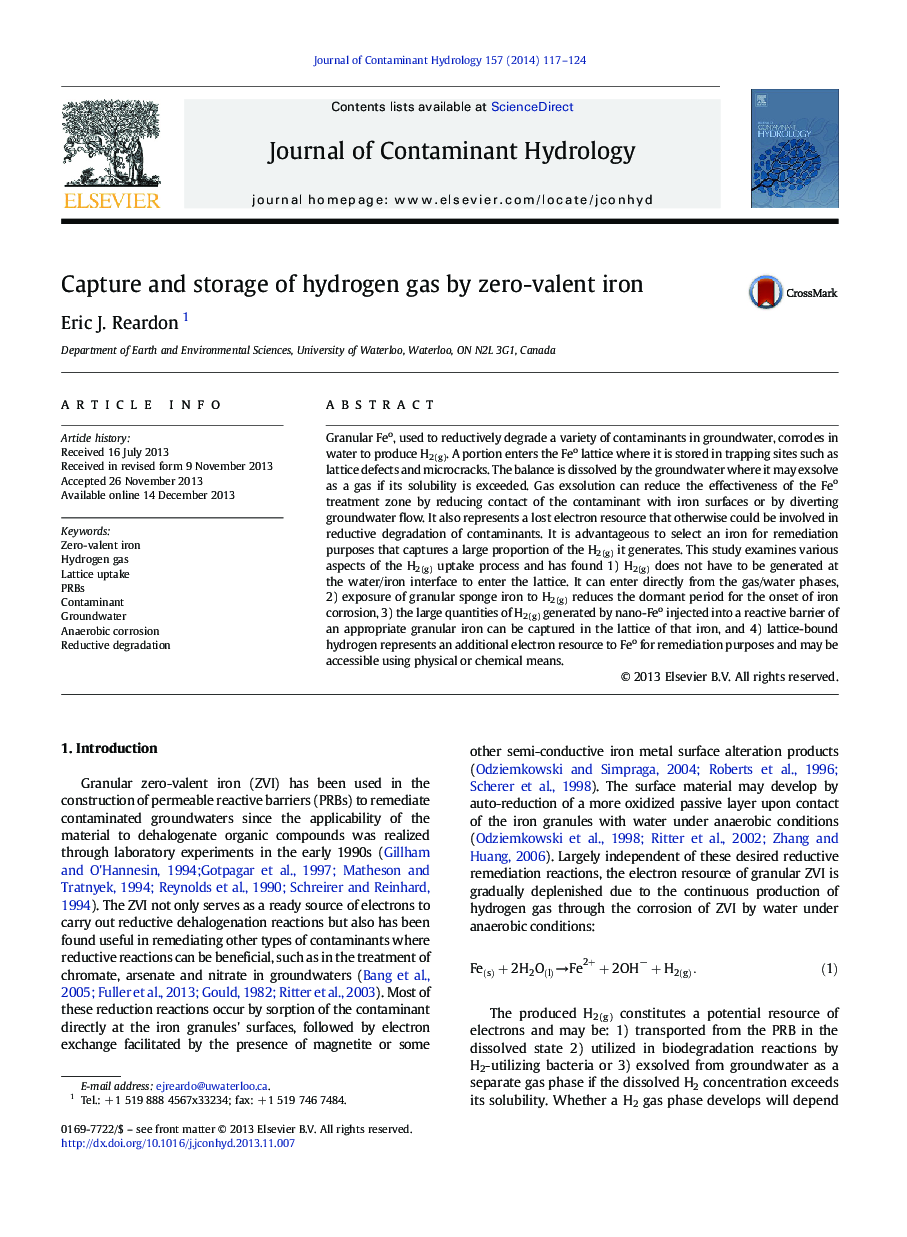| کد مقاله | کد نشریه | سال انتشار | مقاله انگلیسی | نسخه تمام متن |
|---|---|---|---|---|
| 4546621 | 1627050 | 2014 | 8 صفحه PDF | دانلود رایگان |
• ZVI can capture and store half the H2(g) it generates by corroding in water.
• ZVI produced to capture high H2(g) can ensure against gas exsolution within a PRB.
• H2(g) produced when nano-iron is injected in a PRB can be captured by a suitable ZVI.
• The dormant period for sponge iron to corrode is shortened by exposure to H2(g).
Granular Feo, used to reductively degrade a variety of contaminants in groundwater, corrodes in water to produce H2(g). A portion enters the Feo lattice where it is stored in trapping sites such as lattice defects and microcracks. The balance is dissolved by the groundwater where it may exsolve as a gas if its solubility is exceeded. Gas exsolution can reduce the effectiveness of the Feo treatment zone by reducing contact of the contaminant with iron surfaces or by diverting groundwater flow. It also represents a lost electron resource that otherwise could be involved in reductive degradation of contaminants. It is advantageous to select an iron for remediation purposes that captures a large proportion of the H2(g) it generates. This study examines various aspects of the H2(g) uptake process and has found 1) H2(g) does not have to be generated at the water/iron interface to enter the lattice. It can enter directly from the gas/water phases, 2) exposure of granular sponge iron to H2(g) reduces the dormant period for the onset of iron corrosion, 3) the large quantities of H2(g) generated by nano-Feo injected into a reactive barrier of an appropriate granular iron can be captured in the lattice of that iron, and 4) lattice-bound hydrogen represents an additional electron resource to Feo for remediation purposes and may be accessible using physical or chemical means.
Journal: Journal of Contaminant Hydrology - Volume 157, February 2014, Pages 117–124
